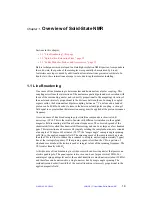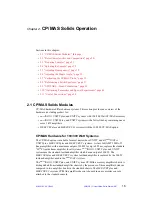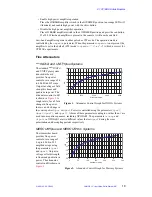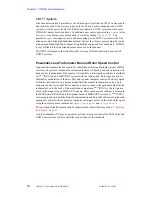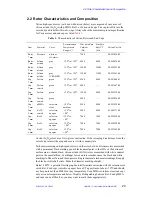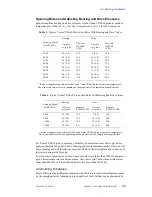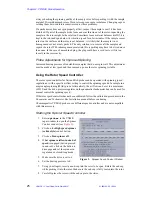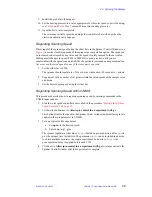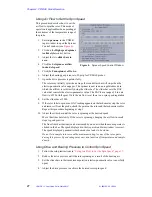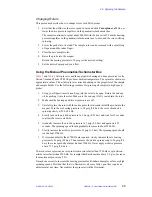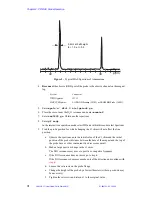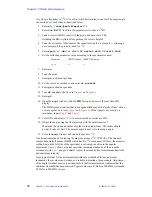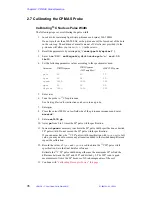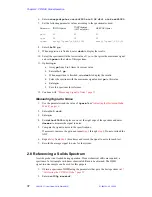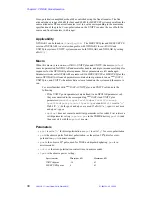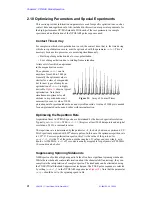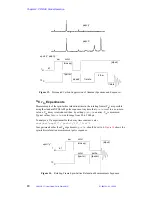
2.4 Spinning the Sample
01-999162-00 C0402
VNMR 6.1C User Guide: Solid-State NMR
28
Changing Rotors
This procedure describes how to change rotors with MAS probes.
1.
Set either the airflow or the rotor speed to zero and click Turn spinner off. Do not
lower the drive-pressure regulator on the pneumatics/tachometer box.
The sample continues to spin at about 200 Hz with the drive air off. Turn the bearing-
pressure regulator on the pneumatics/tachometer box to zero, and the rotor will stop
spinning.
2.
Lower the probe into its stand. The sample rotor can be removed with a small loop
of tape around the index finger.
3.
Place the new sample rotor.
4.
Raise the probe into the magnet.
Return the bearing pressure to 30 psig (or the desired setting).
5.
Set the desired spin speed or air flow.
Using the Manual Pneumatics/Tachometer Box
and
lists spin rates and the appropriate bearing and drive pressures for the
Varian 7-mm and 5 mm CP/MAS probes at ambient temperature. The spin rates shown are
approximate values. The actual spin rate varies depending on the properties of the sample
and sample holder. Use the following procedure for spinning all samples in high-speed
probes:
1.
Using your fingers, insert an end-cap into the rotor to be spun. Rotate the end cap
while pushing it into the rotor. Make sure the end cap is fully seated into the rotor.
2.
Make sure the bearing and drive air pressure are off.
3.
Carefully place the rotor with the end cap into the stator and install the probe into the
magnet. Turn the air bearing pressure to 28 psig (2.0 bar); the rotor should start
spinning slowly at 500–900 Hz.
4.
Slowly turn on the air drive pressure to 3.6 psig (0.25 bar) and wait for 15 seconds
to allow the rotor to stabilize.
5.
Gradually increase the air drive pressure to 7 psig (0.5 bar) and again wait 15
seconds. The spinning speed should gradually increase to about 2500 Hz.
6.
Slowly increase the air drive pressure to 14 psig (1.0 bar). The spinning speed should
reach about 3700 Hz.
7.
If rotor speeds faster than 3700 Hz are required, slowly increase the air bearing
pressure to 36 psig (2.5 bar). Then increase the air drive pressure up to 34 psig (2.4
bar); the rotor speed should reach about 7200 Hz. Never apply air drive pressure
above 72.5 psig (5.0 bar).
To avoid rotor explosions, never spin zirconia rotors faster than 7200 Hz or spin silicon
nitride rotors faster than 9500 Hz. For samples that have densities above 3.0 g/cc, decrease
the maximum spin rate by 35%.
It may be necessary to increase the bearing pressure for ill-behaved samples or for very high
spinning speeds. Provided that the two flowmeter valves are fully open, they require no
adjustment at any time. Never adjust the spin rate with the flowmeter.

